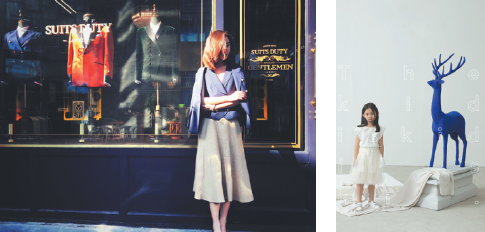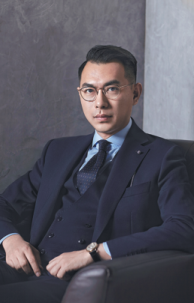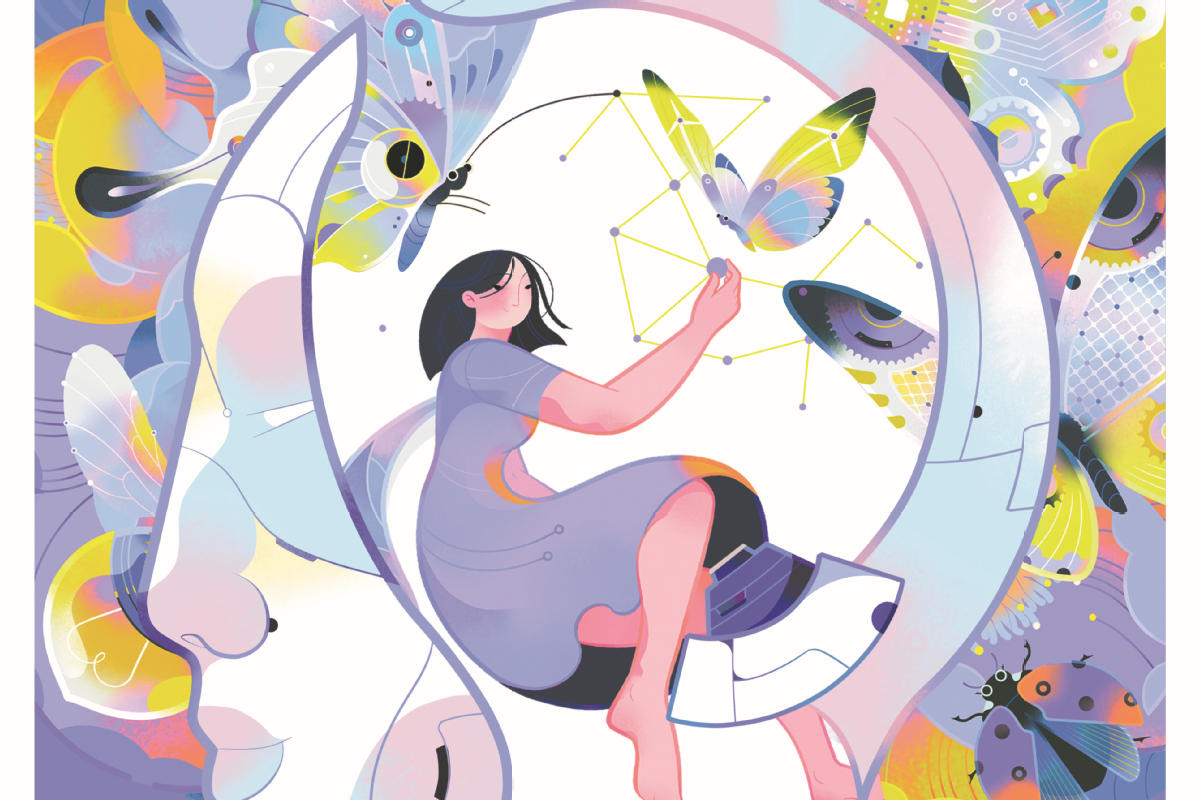Institutions select deep blue as their choice for color of the year

Colors are like words, they have meaning. They can represent emotion, such as yellow for optimism. Traffic lights, of course, with green for go and red for stop, are the most obvious everyday examples.
People use color in their daily lives for a myriad reasons and in their homes to show their personality and to relax.
Picking a color of the year helps reflect the global temperament. In the West this is the award season for the entertainment sector with the Grammys and Oscars. And for 2020 the award goes to-two leading companies in the field, Pantone and PPG, nominated the same hue-deep blue.
The Pantone Color Institute started to forecast color trends two decades ago, and this year, the classic blue was selected as the "star color "by its team of experts from all over the world. They drew inspiration from film and television, art collections and fashion shows.
PPG, specializing in paint and coatings, announced its first color forecast in 2014. It chose Chinese Porcelain blue for this year-the same as classic blue to the naked eye.
The color was selected by 20-odd global color stylists from various sectors, including the automotive, consumer electronics, aerospace and home paints and stains. Over the previous year they researched, studied and analyzed lifestyles, demographics, global and cross-cultural societal inspirations, according to Dee Schlotter, PPG's senior color marketing manager.
The rise of blue reflects consumer desire for relaxation, reliability and adventure, says a PPG report, and blue is set to stay, being a popular choice for automobiles over the next four years.
Pantone describes classic blue as a "restful" color, which "brings a sense of peace and tranquility to the human spirit, offering refuge", on its official website. PPG adds that the choice of blue reflects people's demand for trust and calm. It sees Chinese Porcelain as "a blend of cobalt and moody ink blue that imparts calmness, hopefulness and restful sleep-precious commodities in a restless world".
"The need for simplicity and escapism from technology is, in part, the reason that consumers are craving blues that bring us closer to natural elements such as the sea and sky-elements that represent peace and serenity," Schlotter says.
Blue is making its presence felt in other sectors too.
British perfume brand Jo Malone London released a new cologne and chose blue for the packaging and gift boxes at the turn of the year and cosmetic brand Charlotte Tilbury had blue fireworks on the casing of the newly launched eye shadow compact.
PPG suggests Chinese Porcelain can mix well with different colors: Blended with light hues, it shows vibrancy and a confidence to express oneself; with pineapple and carrot cake, it shows earthy sustainability, and with organic blue-greens, it can bring the sense of a summer breeze.
Many Chinese professionals in the fashion fields also prefer blue.
Zheng Rongkai, 35, has been managing the brand image for a children's wear company for three years. Every season, he is in charge of photo shoots for the lookbooks of the Starroom brand and for its show space designs, from the lighting to displayed installations. Blue is his favorite, not least because of what it can suggest when paired with other colors.
"Blue turns pink into something less frivolous, more vague; it makes black less boring; it makes gray more flexible, and it basically makes every element more mysterious," Zheng says.
And in the business-suit section, classic blue is the first choice.
Hu Zhen, 31, founder of Western-suit brand Mr Dandy, says that this shade of blue is the most popular color when his customers purchase customized Western suits.
His brand opened four stores in Beijing, Shanghai, Shenzhen and Wuhan. Its customers are mostly young people, aged 25 to 35, many of whom work in the financial sector or are entrepreneurs who just started their own business.
Hu claims that 40 percent of his customers would go with blue when they order Western suits. "The classic blue is a friendly color, and it can never embarrass you," he says.
Classic blue's degree of popularity is widespread, says Qiao Jing, a Beijing-based managing director of Suits Duty, a brand from the United Kingdom which just entered China last year. "Almost 95 percent of our customers that I have met prefer the classic blue," she says.
She also notices that people need a "safe" color to look professional, instead of displaying their glaring personality in the office.
Qiao claims that classic blue is not an aggressive or outstanding color. In business situations, people don't want to show too much personality, or to steal the limelight from their bosses, so looking calm and reliable is what they want.
She also mentions that the Western suits are gradually making their presence felt in China, as she noticed that people now wear suits more outside the office to cultivate a cool, sophisticated look, and that women love to match it with casual-styled skirts.


Today's Top News
- Ukraine says latest peace talks with US, Europe 'productive'
- Asia's rise and Europe's structural decline
- Economic stability a pillar of China's national security
- Xi taps China's deep wisdom for global good
- New rules aim for platforms' healthy growth
- Chinese web literature grows overseas






























